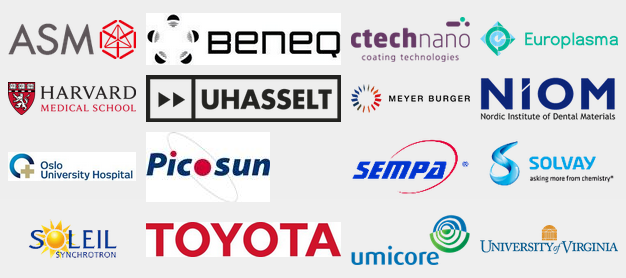HYCOAT - A European Training Network for Functional Hybrid Coatings by Molecular Layer Deposition

The opportunity
Hybrid materials engineered at the molecular scale can have synergetic properties, i.e. surpassing the performance of their individual inorganic and organic components. Thin films of hybrid materials will enable breakthroughs in several economically and socially relevant technological application areas of:
- Packaging / encapsulation: providing pinhole-free, ultrathin, flexible coatings with unique mechanical properties (flexibility, stretchability, reduced brittleness), e.g. gas-barriers on organic light emitting diodes (OLEDs).
- Electronics: new materials with tailored mechanical and dielectric properties, e.g. for use as insulators in advanced integrated circuits or high-k gate dielectrics in flexible thin-film transistors. Additionally, cleverly constructed hybrid coatings could enable thermoelectric devices for conversion of waste heat into electric power.
- Batteries: mechanically flexible electrolyte layers and buffer layers could enhance the rate performance, safety and cycling ability of Li-ion batteries that are crucial for mobile applications and wireless devices.
- Biomedical applications: promoting cell growth/adhesion or imparting anti-bacterial functionalities. Such coatings would open up completely new horizons in sensing, diagnostics and medicine delivery.
The challenge
Combining inorganic and organic building blocks on a molecular scale is challenging due to the different preparative conditions needed for forming inorganic and organic networks. Current routes are often based on solution chemistry, e.g. sol-gel synthesis combined with spin-coating, dipping or spraying. Liquid-based techniques lack the level of control (thickness, composition, etc.) and sophistication (avoiding contamination, corrosion, etc.) required to fully enable the potential of hybrid coatings, especially on complex surfaces.
NanoGUNE's contribution: MLD coatings for encapsulation (WP2)
Many applications require some form of encapsulation with permeation barriers, from food packaging to solar cells or OLED displays. However, each application has different requirements regarding barrier properties, fabrication throughput and costs. For example, for flexible electronics, such as OLEDs, the barrier requirements are very stringent, as exposure to moisture will reduce efficiency and lifetime. On the other hand, food packaging allows water vapour transmission rate values many orders of magnitude higher, but has to be produced in large volumes and at very low cost while maintaining mechanical flexibility. Barriers made by combining ALD, MLD and vapour phase infiltration have the potential to be tunable in performance and cost and could therefore be used on both ends of the application spectrum.
Two Early Stage Researcher (ESR) will be hired to work in this research line under the supervision of the Ikerbasque Research Professor Mato Knez, Group Leader of the Nanomaterials research group at nanoGUNE.Their research projects will be:
- Electronic functionalization of packaging materials
- Biofunctionalized gas permeation barriers through vapour phase infiltration and spatial MLD
-
Aalto University, Finland
-
CIC nanoGUNE, Spain
-
Ghent University, Belgium (Coordinator)
-
IMEC, Belgium
-
KU Leuven, Belgium
-
Ruhr-Universität Bochum, Germany
-
TNO, the Netherlands
-
Tindal National Institute, Ireland
-
University of Helsinki, Finland
-
University of Oslo, Norway
Partner organizations:

